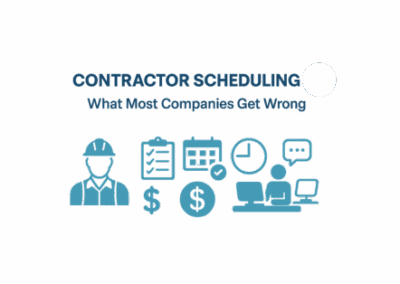While figures for 2024 aren’t in yet, the number of wage and salary workers belonging to a union in 2023 was 14.4 million workers.(10% of the workforce). This means there was a slight up-tick in union membership from 2022. If these trends continue to grow, managers must have an understanding of how to effectively manage unionized workers.

Unionization efforts have primarily served as a last-ditch attempt by employees who feel neglected, insulted, unheard, and underappreciated. They are frustrated individuals seeking relief from what they believe is hopeless in their relationship with their employer. As a result, they opt to form or Common issues for union organizers are the demand for higher wages, and better work hours.
Managing unionized workers can be difficult if they feel like that in their organization. For businesses, this means navigating legal obligations, maintaining positive relationships with union representatives, and ensuring that the terms of union contracts are honored. The key to success is balancing the needs of both the organization and its employees while fostering a culture of trust and mutual respect.
Whether you’re new to managing unionized workers or looking to refine your approach, understanding how to manage union relationships effectively is critical. This blog post will provide an overview of key strategies, challenges, legal considerations, and the role of technology in union management to help you succeed in leading a unionized workforce.
Understanding Unionized Workers
The Role of trade Unions in the Workplace
Unions represent workers in collective bargaining and advocate for their rights and interests. They negotiate employment terms—such as wages, benefits, working conditions, and other policies—on behalf of their members. In unionized workplaces, union representatives are typically the primary point of contact between management and workers. In the United States and Canada, the industries that are most represented by unions include public sector workers, security officers, healthcare workers including nurses, manufacturing and industrial workers.
Unions are less common in the private sector workforce compared to the public sector, but they are still a significant part of certain industries, particularly those with historically strong labor movements or where the workforce is largely unionized due to industry-specific conditions.
The presence of a union means that the employees have a collective voice. This changes the dynamic between workers and employers, as all negotiations, disputes, and day-to-day management must take into account the union’s involvement.
Key Terms to Know:
- Collective Bargaining: The process in which unions negotiate employment terms and conditions with employers. Employees engaging in collective bargaining are known as a bargaining unit.
- Labor Agreements: The contracts that outline the terms agreed upon during collective bargaining.
- Union Representation: The role of the union in speaking for its members on workplace matters.
Common Challenges of Managing Unionized Workers

When managing unionized workers, several challenges may arise:
- Strikes and Work Stoppages: If negotiations fail or issues remain unresolved, employees may strike, which can halt operations and cause significant disruptions.
- Grievances and Disputes: Employees may file grievances if they believe their rights or terms of the collective agreement have been violated. Managing these disputes requires careful attention and a fair approach.
- Maintaining Compliance with Labor Agreements: Unions typically negotiate detailed labor agreements, and failure to comply with these can lead to legal consequences and damaged relationships with workers.
Being aware of these challenges can help you prepare and respond effectively when issues arise.
Who are Unionized Workers?
Unions are becoming less critical in the workplace due to rising globalization, consolidation, technological advancements, social media, a transitory workforce, and alternative work arrangements, to mention a few. As a result of these developments, professionals are under tremendous pressure than ever to discover innovative methods to operate efficiently in a unionized workplace. Before defining tactics for doing so, it is critical first to grasp the significant differences between unionized and non-unionized work settings.
One such distinction is the presence of a collective agreement (a written union contract) that outlines the nature of the union-management relationship. Employers cannot engage in individual contracts with employees in a unionized setting since the union is the exclusive negotiating representative for a group of employees.
From the standpoint of an organization, it must run the business within the constraints of the collective agreement. A recognition provision certifies the union as the only negotiating representative for employees covered by such a collective agreement.
Seniority issues, prospective and actual labour conflicts, and salaries are often based on years of service rather than merit, separating the unionized workplace from the non-unionized environment.
Legal Considerations in Managing Unionized Employees

Key Labor Laws and Regulations
When managing a unionized workforce, legal compliance is paramount. Employers must adhere to various laws designed to protect workers’ rights and ensure fair treatment. Some key regulations include:
- National Labor Relations Act (NLRA): This law protects the rights of employees to organize and engage in collective bargaining. It also prevents unfair labor practices by employers and unions.
- Fair Labor Standards Act (FLSA): While not specific to unions, the FLSA regulates minimum wage, overtime pay, and child labor standards. Unionized workers are still entitled to these protections.
- Occupational Safety and Health Act (OSHA): Union workers are entitled to safe working conditions, and management must comply with health and safety regulations.
By ensuring compliance with these laws, you help avoid costly legal issues and build a better working relationship with your unionized workforce.
How to Avoid Common Legal Pitfalls
Legal pitfalls in union management can be costly for both the business and its employees. Here are some tips for avoiding common legal issues:
Fair and Transparent Disciplinary Actions: Ensure that any disciplinary action is carried out according to the union agreement, and avoid using punishment as a means to suppress union activity.
Know the Collective Bargaining Agreement (CBA): Always stay up-to-date with the provisions of the union contract. Failing to honor the terms of the CBA can lead to legal disputes.
Avoid Retaliation: Don’t retaliate against employees for engaging in union-related activities. Retaliation is prohibited under the NLRA and can lead to serious legal consequences.
Best Practices for Managing Unionized Workers
effective communication
Effective communication is the cornerstone of managing a unionized workforce. Establishing a positive relationship with union representatives fosters trust, reduces misunderstandings, and helps prevent conflicts before they escalate.

To build strong relationships with unions, management should:
- Treat Union Leaders as Partners: Recognize that union leaders are working on behalf of their members and seek to address their concerns in a collaborative manner.
- Respect the Collective Bargaining Process: Honor the integrity of the bargaining process by negotiating in good faith and respecting the agreed-upon terms.
- Listen Actively: Show a genuine interest in hearing the concerns of union leaders and workers. Make time for meetings, listen to feedback, and respond thoughtfully.
Open Dialogue and Transparency
Transparent and consistent communication is essential. Ensure that union representatives are kept informed about business decisions that affect workers, such as changes in policies, scheduling, or shifts in operational goals. Establishing a regular cadence for meetings and discussions will help build trust between management and the union.
Some best practices for transparent communication include:
Clear Documentation: Keep all communications documented, from meeting notes to formal notices, ensuring that nothing is misunderstood or overlooked.
Regular Check-Ins: Schedule regular meetings with union representatives to discuss ongoing issues, future negotiations, and any concerns that may arise.
conflict resolution and dispute management
Even in the best-managed unionized workplaces, conflicts can arise. Whether over issues of unfair treatment, safety concerns, or wage disputes, addressing grievances in a timely and transparent manner is crucial for maintaining a peaceful work environment.
A formal grievance procedure should be established as part of the collective bargaining agreement. When a grievance is filed, ensure that the process is followed:
- Acknowledge the Grievance: Promptly acknowledge the grievance and let the employee or union representative know you are addressing the issue.
- Investigate Thoroughly: Take the time to fully investigate the grievance and gather all relevant information before making a decision.
- Resolution: Work toward a resolution that is fair to both the employee and the company, and ensure that the decision is in compliance with the union agreement.
Training Managers to Handle Union Issues
One of the best ways to prevent conflicts from escalating is to train managers and supervisors on how to handle union-related issues effectively. Training should include:
Problem-Solving: Equipping managers with tools for resolving conflicts in a fair and timely manner.
Understanding Labor Laws and Agreements: Ensuring that managers understand the rights of union members and the terms of the labor agreements they are required to follow.
Communication Skills: Teaching managers how to handle sensitive conversations with union representatives and workers.
Utilizing technology to manage Unionized Workforces
Managing a unionized workforce can be complex, but technology can simplify many aspects of the process. Workforce management software like Celayix can assist with managing union workers’ schedules, tracking hours, and ensuring compliance with labor agreements.
Some benefits of using technology include:

Compliance Monitoring: Technology can monitor compliance with union contracts, ensuring that any issues are flagged early and addressed promptly.
Scheduling Automation: Automation of scheduling helps ensure compliance with union agreements regarding work hours, overtime, and rest periods.
Time and Attendance Tracking: Track employees’ attendance in real-time to ensure that all shifts are covered and labor regulations are followed.
Shift Assignment: With Celayix, you can prompt the software to assign shifts in a specific order. A big thing with a lot of labor unions is seniority. So, if seniority is important for you when filling out a schedule, our Autofill tool can assign shifts automatically based on the seniority you’ve provided to the software.
Although it may not be directly related to Unionized workers specifically, automated employee scheduling software also enables you to provide self-scheduling options to your workers. This can definitely improve relations between management and workers, or management and union representatives.
Always Admit Your Errors
A manager’s work can be highly demanding and stressful. Even the best managers might feel overwhelmed when dealing with unionized workers. You must deal with many grievances or attend hurried meetings to resolve worker complaints.
Sometimes, you need to catch up on some of the most critical aspects of your career. When you ignore details, you risk making poor judgements that may harm your team.
But, if you make a bad judgement, don’t try to excuse yourself or hunt for scapegoats. Simply confess your error. It will instil trust and respect in your unionized workers.
Build Sustainable Trust with your Unionized Workers
Establishing and maintaining trust in a non-unionized workplace is challenging enough, but it is far more difficult in a unionized atmosphere. When a shop steward constantly scrutinizes how you handle your employees, it can cause tension and distrust. That’s not good for anyone.
Pay attention to anything that might lead to mistrust. Be proactive in resolving issues that are affecting your connection with staff. Do not wait to be told since trust is not something to be taken lightly.
No manager wants to supervise employees who are skeptical of every choice they make, even if they are well-intentioned.
What else can you do?
It is completely feasible to manage unionized workers without any severe issues. But it is dependent on how you treat your employees.
If you treat people fairly, for example, by not discriminating against them, paying what they are due, speaking with respect, listening to their thoughts, and is concerned, it is far less likely that they will cause you problems. Some other tips that can work in managing unionized workers are:
- DOCUMENT EVERYTHING, EVEN IF YOU THINK IT’S NOT IMPORTANT
- MAKE YOUR EXPECTATIONS EVEN MORE EXPLICIT
- DRIVE EMPLOYEE DEVELOPMENT THROUGH INQUISITIVE COACHING
- BRING THE ELEPHANT OUT IN THE OPEN
- INCREASE FEEDBACK RATE
- TOUGHEN YOUR SKIN
At the end of the day, managing unionized workers doesn’t have to be rocket science. Yes, it can be more difficult than managing non-unionized workers, but it’s not impossible. Remember that Celayix can help when it comes to employee scheduling and other elements of workforce management for unionized workers! If you’d like to learn more about how, sign up for a free live demo and ask any questions you might have!




